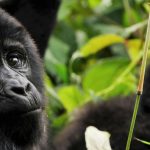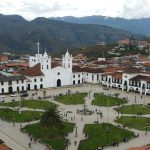Country is reaching out to the world’s birdwatchers
Colombia is on an our-feathered-friends-appreciation roll, with the country again topping an international birdwatching competition, a development Colombian tourism officials say will enable it to make further inroads in the burgeoning international birdwatching market.
Birders in Colombia recorded an astonishing 1,560 bird species during Global Big Day 2025, enabling the country to reaffirm its title as the most biodiverse nation on Earth for birds and a rising global leader in nature tourism.
This achievement comes amid a landmark moment for Colombian tourism, with the country welcoming over 6.8 million international visitors last year, a record.
Global Big Day, coordinated by the scientific platform eBird, is held in over 200 countries each year and unites birders, scientists, and local communities to celebrate World Migratory Bird Day. This year, Colombia once again topped the leaderboard, outpacing Peru, where 1,399 species were spotted and Brazil, which saw 1,245 specie sightings.
“This achievement confirms Colombia’s incredible natural richness and our commitment to sustainability,” said Carmen Caballero, president of tourism board ProColombia. “Birdwatching is not just a niche activity, it’s a growing force for sustainable development in our regions and a key part of how we show the beauty of Colombia to the world.”
Colombia has over 1,900 bird species, 79 endemic and is at a strategic location along major migratory routes.
The Colombian tourism sector has embraced birdwatching, developing infrastructure tailored to birdwatchers — from specialized and bilingual guides to eco-lodges and scenic trails. Complementary services such as transportation, field meals, and locally made souvenirs round out the experience.
The country has created specialized birding routes, attended global fairs like the Global Bird Fair, and hosted FAM trips.
“This focused investment is paying off. Birdwatching has become not only a conservation tool but also a vital source of income for local communities, connecting travellers with Colombia’s incredible landscapes, wildlife and culture,” says ProColombia.
Luis Alejandro Dávila, vice president of tourism at ProColombia, notes Colombia is winning the international competition regularly.
“One could say that Colombia holds a legendary place in the world of birdwatching,” he says. “Since 2017 — with the exception of 2021 — the country of beauty (Colombia) has consistently reported the highest number of bird species during Global Big Day, which is the world’s largest and most inclusive bird-counting event. That’s seven times since 2015 that Colombia has led the global list, a reflection of the country’s unparalleled biodiversity and the dedication of its birding community.
“In the 2025 edition, Colombia once again reached the top, recording an extraordinary 1,564 bird species. This is a testament to the country’s immense biodiversity and the strength of its conservation-minded citizen scientists and ornithologists.
“Plus, this achievement comes amid a landmark moment for Colombian tourism. In 2024, the country welcomed over 6.9 million international visitors — a historic record. And we are excited to see that according to data from ProColombia and the tourism consultancy ForwardKeys, international air bookings to Colombia between April and September 2025 have already surpassed 487,000, a 6% increase over the same period last year.”
Davila isn’t becoming blase about Colombia’s repeated success.
“Colombia’s ongoing dominance in Global Big Day continues to thrill nature lovers at home and around the globe,” he reports. “This isn’t just about numbers; it’s about legacy, about pride, about the joy of seeing nature thrive. Every year, birdwatchers, scientists, and curious travelers get together to celebrate Colombia’s place as the heart of the birding world. The country’s six tourist regions, filled with different landscapes from wetlands to jungles, oceans, mountains, glaciers, plains, moors, and more, hold a beauty that never fades, and our invitation is open to all Canadians who want to witness it for themselves.”
Davila attributes Colombia’s success to its geography, which places it at the crossroads of several key migratory routes and has varied ecosystems, among them high Andean páramos and forests, flooded savannas and humid Amazon jungle.
“In the 2025 edition of Global Big Day, several departments played starring roles in success. Meta, Antioquia, Putumayo, Valle del Cauca, and Caldas were among the top contributors, offering access to unique habitats teeming with life,” he continues. “Iconic locations such as Laguna La Concha in Curillo, the Manacacías River in Puerto Gaitán, and the ecologically rich Tame Ecopark were instrumental in registering the country’s bird count.
“Colombia now holds the world record for the most bird species observed in the Global Big Day, and it’s easy to see why. Birdwatchers travel here to find over 150 species of hummingbirds, more than 200 flycatchers, and 140 types of tanagers.
“Colombia is a journey through ecosystems that feel like different worlds. Near Bogotá, the capital city, wetlands bustle with life and offer sightings just minutes from the urban center. On the Pacific coast, dense rainforests filled with endemic species draw serious birders into their depths. In the north, the Sierra Nevada de Santa Marta rises from the Caribbean Sea, hosting some of the rarest birds on Earth in one of the most biodiverse mountain ranges on the planet.
“Travellers also visit Chocó, Valle del Cauca, the Eastern Andes, the Amazon basin, and the Coffee Cultural Landscape. Each region offers different sceneries and bird species. But it does not matter where you decide to go: whether you’re trekking into remote jungle or exploring a high-altitude natural park, every birding experience in Colombia is rich with possibility.”
Meanwhile, Davila says Colombia is making ongoing inroads in the international birdwatching market, viewed as a lucrative aspect of tourism.
“More and more are discovering it, and the word is spreading fast,” he states. “Colombia has recognized the treasure it holds and has made a concerted effort to develop its birdwatching infrastructure. Across the country, birders will find a network of eco-lodges, scenic trails, community guides, and support systems designed to offer an immersive, respectful experience with nature.
“This is not just about sightseeing. It’s about living meaningful travel experiences, along with birds and nature, of course, but also with the local communities that have been involved in and evolving around this type of tourism. With thoughtful planning, Colombia has built the conditions needed for this niche to thrive, adding services like field meals, transportation, guidebooks, souvenirs, and mapped birding routes that highlight the country’s best spots.
“What began as a passion project for conservationists has grown into a dynamic force for sustainable tourism. Birdwatching is now creating economic opportunities for local communities while building international bridges through shared love of wildlife. It’s not only about seeing birds, it’s about preserving them, understanding them, and using that understanding to improve lives.
“Thanks to events like Global Big Day, more people are coming to Colombia with binoculars in hand and conservation in mind.”
ProColombia has created an illustrated nature handbook to educate tourist guides and nature lovers. It has an overview of the country’s biodiversity along with 50 podcasts and fact sheets in Spanish and English. It’s free and can be accessed at: guianaturaleza.colombia.travel/en/.
Davila says his homeland should be viewed as great for birdwatchers.
“Colombia’s consistent reign as the world leader in Global Big Day is more than just a number,” he says. “It’s more like a symbol of the country’s extraordinary biodiversity, of its commitment to conservation, and of its vision for a sustainable future where tourism and nature belong together. There is no doubt: as birdwatching rises globally, Colombia stands at the forefront.”
For more, visit: colombia.travel/en.

















